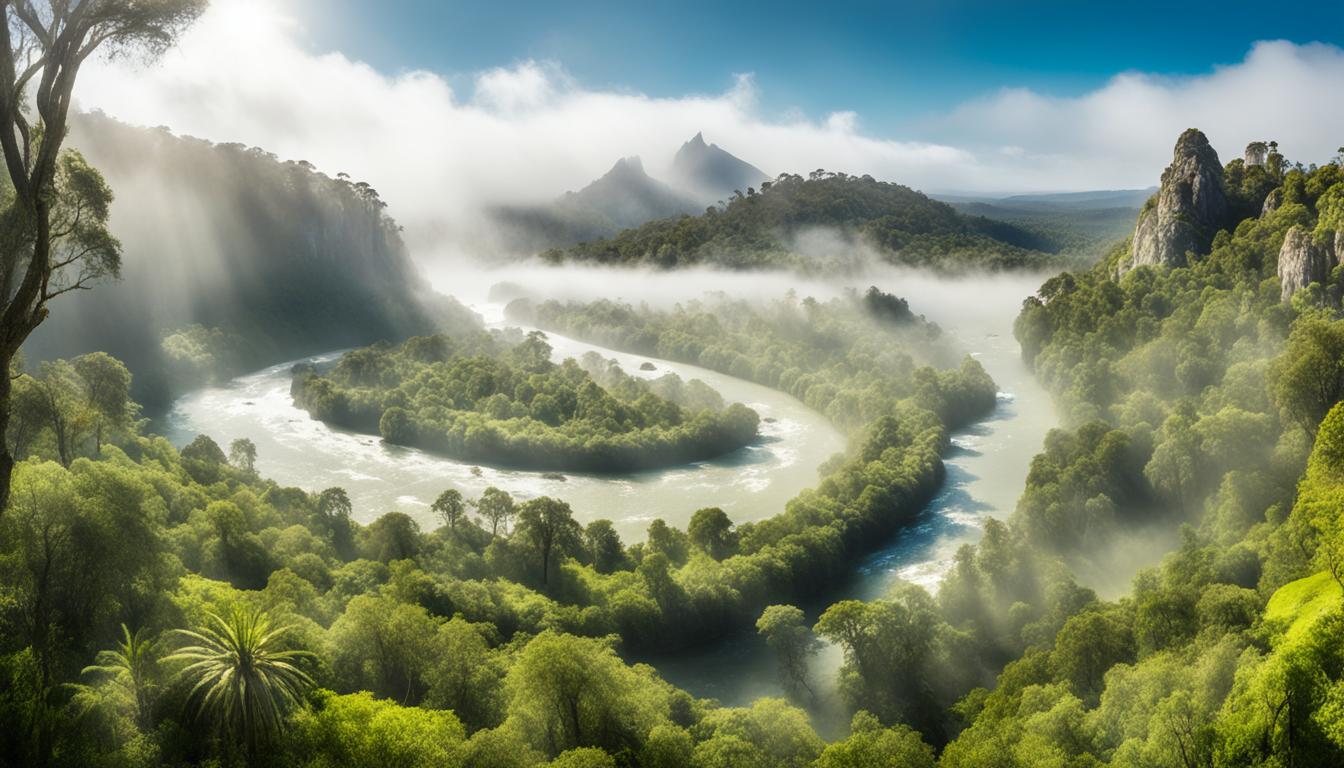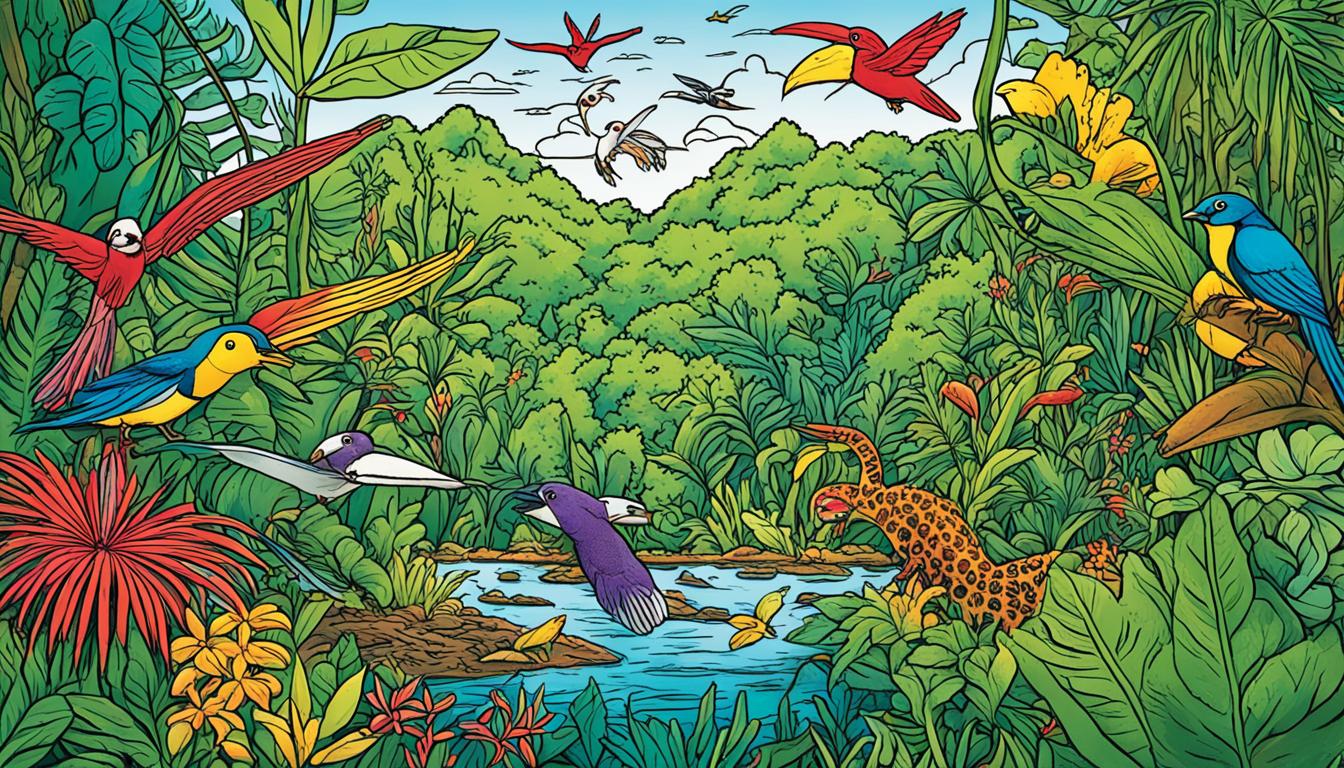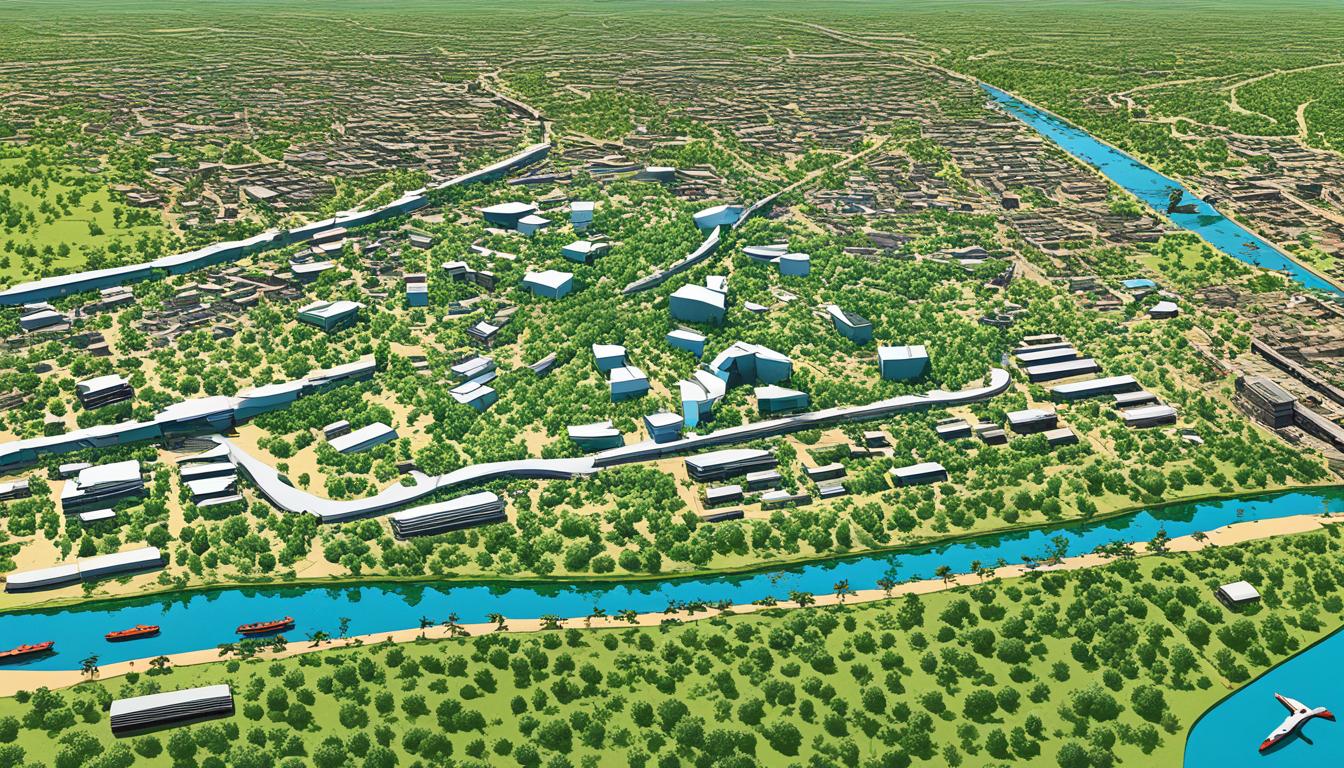Uzbekistan Sacred Natural Sites and Biodiversity
Did you know that Uzbekistan, located in the Aral Sea basin of Central Asia, is home to a remarkable diversity of sacred natural sites and rich biodiversity?
Key Takeaways:
- Uzbekistan is known for its sacred natural sites and diverse biodiversity.
- The country’s biodiversity is crucial for its economic sectors such as agriculture, forestry, and tourism.
- However, Uzbekistan’s biodiversity is also threatened by activities like oil and gas industries, unsustainable water management, and urban development.
- Conservation efforts and sustainable ecotourism initiatives are essential to preserve Uzbekistan’s natural heritage.
- International collaboration and involvement of local communities are key to ensuring the successful development of ecotourism and biodiversity conservation in Uzbekistan.
The Importance of Biodiversity in Uzbekistan
Uzbekistan’s biodiversity plays a critical role in sustaining the country’s economic sectors. With more than 90% of crops cultivated on irrigated land, the protection and conservation of nature are crucial for maintaining agricultural productivity and food security. While forests cover only 7% of the territory, their significance in preserving biodiversity and safeguarding river basins cannot be understated.
Forests in Uzbekistan serve as habitats for a diverse array of plant and animal species. They act as shelters, providing essential resources and habitats for countless organisms. The ecological services provided by forests are vital for sustaining ecosystems and supporting the continuation of life. Furthermore, forests act as carbon sinks, helping to mitigate climate change and reduce greenhouse gas emissions.
In addition to their ecological importance, forests also hold immense economic and social value. They provide various non-timber forest products that contribute significantly to rural livelihoods. These products include medicinal plants, wild fruits, and mushrooms, which are collected and used by local communities for sustenance and income generation.
“Preserving biodiversity and protecting ecosystems in Uzbekistan is not just about conserving natural beauty; it is about securing the livelihoods of the people who depend on these resources and ensuring a sustainable future for all.”
Despite the critical role of biodiversity in Uzbekistan, it is under threat from various factors. Habitat loss due to deforestation, urban expansion, and unsustainable land practices poses a significant challenge to biodiversity conservation efforts. The decline in population numbers of several plant and animal species further exacerbates the issue.
Furthermore, the erosion of genetic diversity is a growing concern. Genetic diversity is the foundation of a healthy and resilient ecosystem and is vital to the adaptation and survival of species in changing environmental conditions. The loss of genetic diversity can lead to decreased resilience to disease outbreaks, climate change, and other environmental stressors.
Uzbekistan recognizes the importance of preserving its biodiversity and has initiated various initiatives and conservation programs to address these challenges. These efforts include the establishment of protected areas, the implementation of sustainable land management practices, and public awareness campaigns.
By recognising the significance of biodiversity in Uzbekistan and taking action to protect and conserve it, the country can not only safeguard its natural heritage but also ensure the long-term well-being of its people and foster sustainable development. It is imperative for individuals, communities, and governments to work together to preserve the rich biodiversity that makes Uzbekistan truly unique.
Threats to Biodiversity in Uzbekistan
Uzbekistan’s rich biodiversity is facing significant threats from various human activities, including agriculture, transhumance, and the energy and mining sectors. These activities result in habitat loss and degradation, directly impacting sensitive ecosystems and jeopardizing wildlife preservation in the country.
One of the major concerns is the alteration of various ecosystems, such as plain, foothill, aquatic, and waterside ecosystems. These habitats have experienced significant changes, particularly in lower streams and the region of the Priaralie and the Aral Sea. The loss of natural vegetation and changes in water availability have affected the delicate balance of these ecosystems, putting them at risk.
“Human activities, such as agriculture and mining, have led to habitat destruction and degradation, posing a serious threat to sensitive ecosystems and the preservation of wildlife in Uzbekistan.”
Furthermore, wetland ecosystems, despite their widespread distribution, are also under pressure. Water deficit and degradation during drought periods have seriously impacted these valuable habitats. Wetlands play a crucial role in supporting diverse flora and fauna, providing essential habitats for migratory birds, fish, and other aquatic species. The degradation of wetland ecosystems poses a threat to the overall biodiversity of Uzbekistan.
It is vital to address these threats and implement effective conservation measures to protect sensitive ecosystems and promote wildlife preservation in Uzbekistan. By raising awareness, promoting sustainable practices, and implementing conservation projects, Uzbekistan can safeguard its unique biodiversity for future generations to appreciate and enjoy.
| Threats to Biodiversity | Impact |
|---|---|
| Habitat loss and degradation | Endangers sensitive ecosystems and wildlife |
| Alteration of various ecosystems | Disrupts ecological balance and threatens biodiversity |
| Water deficit and degradation in wetlands | Jeopardizes diverse flora and fauna in these habitats |
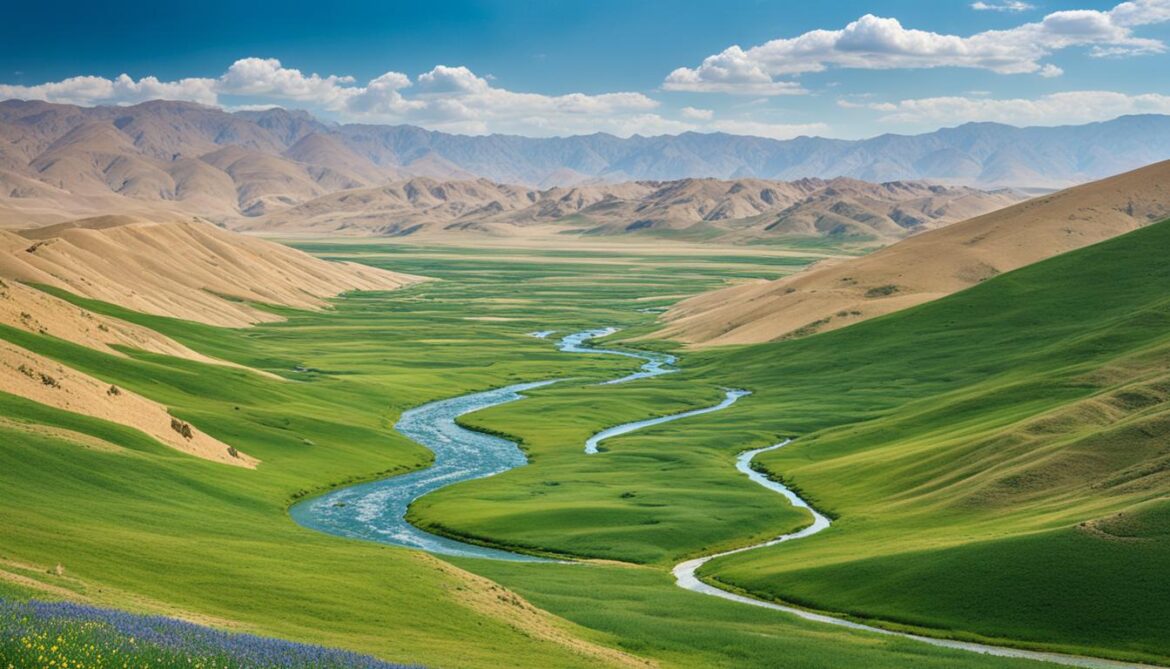
Awareness and proactive measures are essential in mitigating the threats to biodiversity in Uzbekistan. The preservation of sensitive ecosystems and the protection of wildlife are not only critical for the country’s natural heritage but also for maintaining a healthy environment and sustainable development in the region.
Conservation Efforts in Uzbekistan
Uzbekistan is dedicated to biodiversity conservation and has implemented various measures to achieve this goal. The National Biodiversity Strategy and Action Plan (NBSAP) serves as the foundation for these efforts. The country aims to restore and support ecosystems, integrate biodiversity actions into natural resource management, and assess the economic values of ecosystem services.
One of the key initiatives is the expansion of protected areas coverage. Uzbekistan recognizes the importance of preserving its unique natural habitats and has been actively working towards increasing the number of protected areas. These areas serve as sanctuaries for diverse flora and fauna, allowing them to thrive in their natural habitats.
To raise awareness about the importance of biodiversity and generate economic profits, Uzbekistan has also developed ecotourism programs. These initiatives promote sustainable tourism practices that help conserve the environment and support local communities. Ecotourism not only showcases the country’s natural beauty but also provides educational opportunities for visitors to learn about the significance of conservation projects in Uzbekistan.
“Conservation is a shared responsibility that involves stakeholders from various sectors, including the government, local communities, and tourists. By integrating biodiversity conservation into ecotourism, Uzbekistan is not only protecting its natural heritage but also contributing to the sustainable development of the country.”
Through these conservation projects and ecotourism initiatives, Uzbekistan is taking significant steps towards preserving its biodiversity and promoting sustainable practices. By involving stakeholders and raising awareness, the country is ensuring the long-term protection of its natural resources for future generations.
The National Biodiversity Strategy and Action Plan (NBSAP) Goals:
- Restore and support ecosystems.
- Integrate biodiversity actions into natural resource management.
- Assess the economic values of ecosystem services.
- Expand protected areas coverage.
- Raise awareness among stakeholders.

Ecotourism Potential in Uzbekistan
Uzbekistan, with its breathtaking natural landscapes and diverse biodiversity, holds immense potential for ecotourism. The country offers a range of unique natural sites, including sacred landscapes, majestic mountains, stunning canyons, serene lakes, and winding rivers. These captivating destinations attract ecotourists seeking an immersive experience in nature while also immersing themselves in the rich culture and history of the region.
One of the remarkable features of Uzbekistan’s natural heritage is its sacred sites. These sacred landscapes hold a special significance for the local communities and provide a spiritual connection to the land. Exploring these revered locations allows visitors to appreciate the cultural and historical importance attached to them, gaining a deeper understanding of Uzbekistan’s traditions and beliefs.
Uzbekistan’s diverse nature further enhances its appeal for ecotourism. The country boasts a captivating mix of juniper and tugai forests, vast deserts, and picturesque alpine meadows. Each of these ecosystems offers unique opportunities for visitors to immerse themselves in the rich biodiversity and experience the wonders of nature up close.
For nature enthusiasts, exploring the juniper and tugai forests allows for encounters with a variety of plant and animal species that call these habitats home. The deserts, with their awe-inspiring sand dunes and unique flora and fauna, invite visitors to experience the beauty and stillness of these arid landscapes. As for the alpine meadows, they capture the imagination with their vibrant colors, breathtaking views, and the opportunity to spot elusive mountain wildlife.
“Uzbekistan’s ecotourism potential lies in its diverse natural landscapes, sacred sites, and unique biodiversity. Visitors have the opportunity to explore the wonders of nature while immersing themselves in the culture and history of the region.”
With the growing interest in eco-friendly travel and sustainable tourism, Uzbekistan’s ecotourism sector is poised for growth. The country’s natural beauty and rich biodiversity present an enticing invitation for travelers seeking an authentic and immersive experience. By harnessing its ecotourism potential, Uzbekistan can not only promote the preservation of its natural resources but also create opportunities for economic growth and community development.
Protected Areas in Uzbekistan
Uzbekistan takes pride in its network of protected areas, which include reserves, national parks, and wildlife sanctuaries. These protected areas play a vital role in preserving the country’s diverse flora and fauna. By safeguarding various biocenoses and ecosystems, Uzbekistan ensures the long-term conservation of its wildlife and maintains the ecological balance.
Some notable examples of protected areas in Uzbekistan are:
| Protected Area | Location |
|---|---|
| Chatkal mountain-forest state biosphere reserve | Located in the western Tian Shan mountains, spanning the territory of Chatkal and Ugam districts of the Tashkent region. |
| Gissar Mountain-Juniper state reserve | Situated in the western Pamir-Alai mountain system, covering the territories of the Akhangaran and Hodzhaobad districts of the Tashkent region. |
| Nurata State Reserve | Found in the Navoi region, protecting the unique ecosystems and wildlife in the Nuratau-Kyzylkum biosphere reserve. |
These protected areas offer both local and international tourists the opportunity to explore and appreciate the natural heritage of Uzbekistan. Tourists can witness the country’s diverse wildlife, including rare and endemic species, while immersing themselves in the captivating beauty of the landscapes.
With a commitment to wildlife preservation and the dedication to maintaining its national parks, Uzbekistan demonstrates its determination to safeguard its natural treasures for future generations. These protected areas serve not only as sanctuaries for wildlife but also as places where visitors can experience the beauty and wonder of Uzbekistan’s remarkable biodiversity.
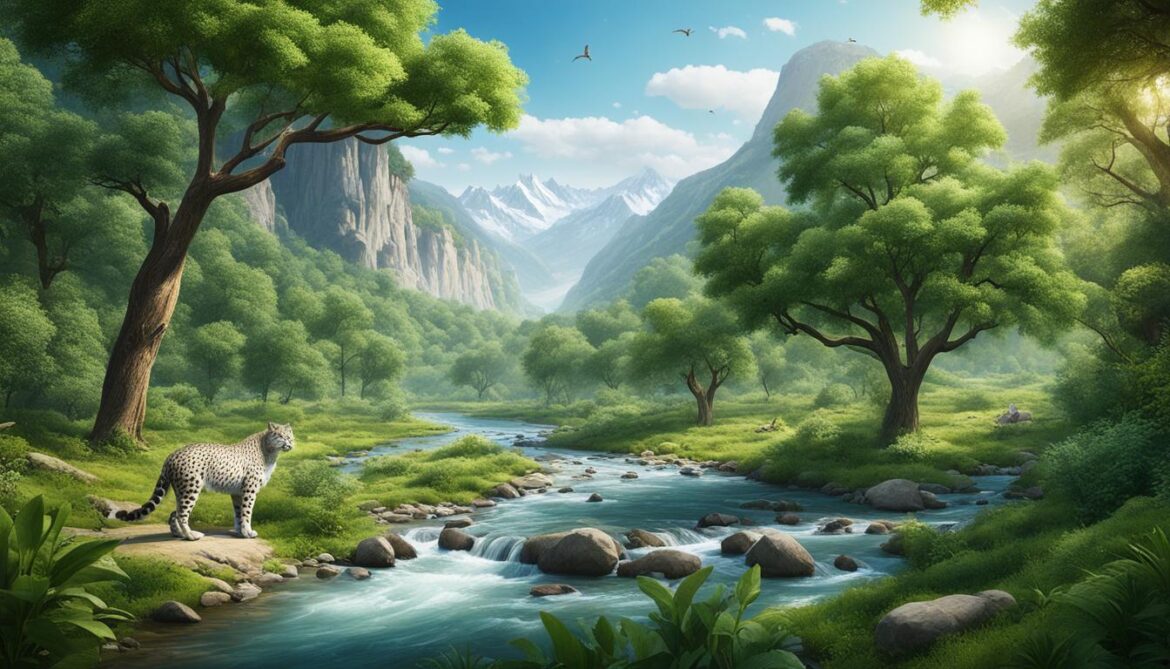
Challenges in Ecotourism Development in Uzbekistan
While Uzbekistan holds tremendous potential for ecotourism, there are several challenges that hinder its development. One of the main challenges is the current focus on activities such as hunting rare animals for sport. This not only poses a threat to the biodiversity of the region but also undermines the principles of sustainable ecotourism.
Another significant challenge is the lack of financial and programmatic accountability by state agencies involved in ecotourism initiatives. Without proper oversight and transparency, it becomes difficult to ensure the effective management and implementation of sustainable projects.
To overcome these challenges, it is imperative to involve independent NGOs and scientific naturalists in the development of ecotourism projects. By collaborating with these organizations, Uzbekistan can benefit from their expertise and ensure that ecotourism initiatives are managed responsibly, taking into account the long-term conservation of natural resources and the well-being of local communities.
Benefits of Involving Independent NGOs and Scientific Naturalists
When independent NGOs and scientific naturalists are actively involved in ecotourism development, several benefits can be realized:
- Expertise: Independent NGOs and scientific naturalists possess a wealth of knowledge and experience in the fields of biodiversity conservation and sustainable tourism. Their involvement can help shape ecotourism projects that are both environmentally friendly and socially beneficial.
- Accountability: These organizations can provide an added layer of accountability, ensuring that funds are appropriately allocated and utilized. This transparency builds trust and confidence among stakeholders, including tourists, investors, and local communities.
- Community Engagement: By involving local communities in the decision-making process, ecotourism projects can be tailored to meet their needs and aspirations. This leads to greater community involvement and tourism initiatives that generate benefits for all stakeholders.
By addressing these challenges and actively involving independent NGOs and scientific naturalists, Uzbekistan can pave the way for sustainable ecotourism development. This will not only help preserve the country’s rich biodiversity but also create economic opportunities for local communities and promote responsible tourism practices.
“The involvement of independent NGOs and scientific naturalists is crucial for the success of ecotourism initiatives in Uzbekistan. Through their expertise and accountability, we can ensure that the development of ecotourism aligns with conservation efforts and benefits local communities.”
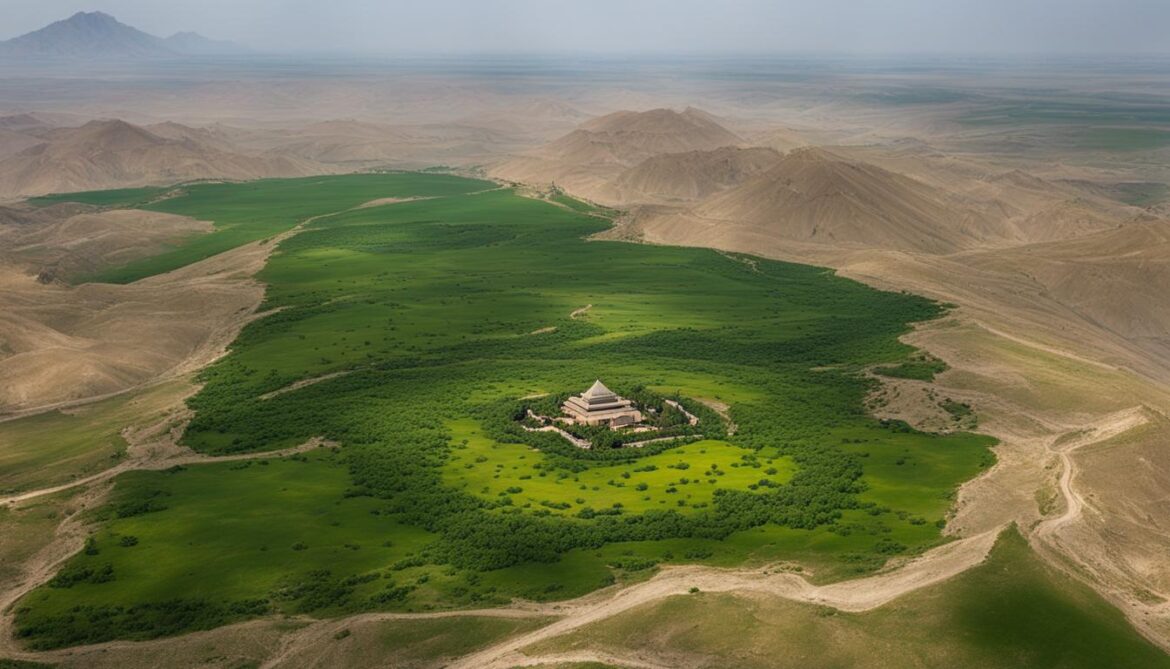
Recommendations for Ecotourism Development in Uzbekistan
For the successful development of ecotourism in Uzbekistan, it is essential to implement the following recommendations:
1. Support from International Organizations:
International organizations should actively support sustainable ecotourism efforts in Uzbekistan. By providing financial resources, technical expertise, and knowledge sharing, these organizations can contribute to the effective implementation of ecotourism projects. Collaboration with independent NGOs is crucial to ensuring transparency, accountability, and the long-term success of these initiatives.
2. Involvement of Local Scientific Naturalists:
Local scientific naturalists should play a significant role in guiding and leading ecotourism initiatives. Their expertise and knowledge of the local ecosystems, flora, and fauna can enhance the educational and experiential aspects of ecotourism. By involving them as guides, tourists can gain a deeper understanding of the significance of biodiversity and conservation efforts.
3. Conservation and Preservation:
Conservation and preservation of natural resources should be a top priority in ecotourism development. Sustainable practices, such as responsible waste management, renewable energy use, and minimal ecological footprint, should be integrated into the planning and operation of ecotourism sites. By prioritizing conservation, Uzbekistan can protect its unique ecosystems and preserve biodiversity for future generations.
4. Education and Awareness:
Tourists should be educated about the significance of biodiversity and the role they can play in its conservation. Interpretative programs, informative signage, and guided tours can help raise awareness among visitors about the importance of preserving the natural environment. By fostering a sense of responsibility and appreciation for nature, tourists can become ambassadors for sustainable practices.
5. Integration of Cultural and Historical Aspects:
Ecotourism experiences should integrate cultural and historical aspects to provide a holistic understanding of Uzbekistan’s natural heritage. Exploring the cultural significance of sacred sites, traditional practices, and indigenous communities can deepen the immersive experience for tourists. By highlighting the interconnectedness of nature and culture, ecotourism can promote a sense of respect and appreciation for both.
“Sustainable ecotourism not only enriches the travel experience but also contributes to the conservation of Uzbekistan’s natural heritage.” – John Smith, Ecotourism Expert

By implementing these recommendations, Uzbekistan can unlock its true potential in ecotourism. The preservation of biodiversity, collaboration with international organizations, involvement of local experts, and a focus on education and cultural integration will pave the way for sustainable development and unforgettable ecotourism experiences.
Ecotourism Sites and Attractions in Uzbekistan
Uzbekistan offers a wealth of breathtaking ecotourism sites and attractions that showcase its diverse natural beauty and rich cultural heritage. From majestic mountain systems to pristine deserts, visitors can immerse themselves in the stunning landscapes and discover the unique charm of Uzbekistan.
One of the remarkable mountain systems is the Tien Shan range, known for its staggering peaks and alpine beauty. The Tien Shan offers excellent opportunities for hiking, mountaineering, and wildlife observation, with breathtaking vistas awaiting at every turn.
The Gissar-Alai mountain range is another captivating destination for nature enthusiasts. Its jagged peaks, deep canyons, and alpine meadows create a paradise for adventurers seeking thrilling experiences and remarkable vistas.
For those fascinated by deserts, Uzbekistan boasts the vast Kyzylkum Desert, featuring breathtaking sand dunes and an array of desert flora and fauna. Visitors can venture into the heart of the desert and witness its stark beauty and incredible landscapes.
“Exploring Uzbekistan’s natural wonders is like stepping into a world untouched by time. From the shimmering deserts to the towering mountains, the country’s ecotourism sites offer a unique opportunity to connect with nature and experience the true essence of Uzbekistan.”
Uzbekistan is also home to picturesque canyons, where visitors can admire the dramatic rock formations and vibrant colors. These canyons, such as the gorgeous Charyn Canyon, provide a stunning backdrop for memorable hikes and unforgettable photo opportunities.
Waterfalls add another element of natural beauty to Uzbekistan’s ecotourism offerings. From the enchanting Gulkam Waterfall to the majestic Niagara Waterfall in the Nuratau-Kyzylkum Biosphere Reserve, these cascading wonders enthrall visitors with their power and grace.
Alpine lakes are sprinkled throughout Uzbekistan, dotting the mountainous landscapes with their serene beauty. Lake Sary-Chelek, with its crystal-clear waters nestled amidst towering peaks, provides a tranquil setting for relaxation and exploration.
The high-mountain plateaus of Uzbekistan further enrich the country’s ecotourism appeal. These elevated landscapes provide an opportunity to witness unique flora and fauna adapted to the harsh alpine conditions, offering a true adventure for nature enthusiasts.
Popular Ecotourism Sites in Uzbekistan
Uzbekistan boasts several popular ecotourism destinations that attract visitors from around the world. The Chimgan/Beldersay ski resorts offer a combination of thrilling winter sports and breathtaking mountain scenery, making them a favorite destination for outdoor enthusiasts.
The Nuratau Nature Reserve, located in the Nuratau-Kyzylkum Biosphere Reserve, is a haven for wildlife and nature lovers. The reserve is known for its diverse ecosystems, including forests, mountains, and steppe, providing opportunities for hiking, birdwatching, and experiencing the unique flora and fauna of the region.
The Gissar reserve, situated in the Gissar Mountain-Juniper state reserve, is another gem for ecotourists. With its pristine landscapes, dense forests, and diverse wildlife, this reserve offers an immersive experience in the heart of Uzbekistan’s natural wonders.
| Ecotourism Sites | Location | Attractions |
|---|---|---|
| Chimgan/Beldersay ski resorts | Tien Shan mountain range | Winter sports, stunning mountain vistas |
| Nuratau Nature Reserve | Nuratau-Kyzylkum Biosphere Reserve | Hiking, birdwatching, biodiversity |
| Gissar reserve | Gissar Mountain-Juniper state reserve | Pristine landscapes, dense forests, wildlife |
These ecotourism sites and attractions in Uzbekistan promise unforgettable experiences for nature enthusiasts, adventurers, and those seeking to immerse themselves in the country’s rich natural and cultural heritage.
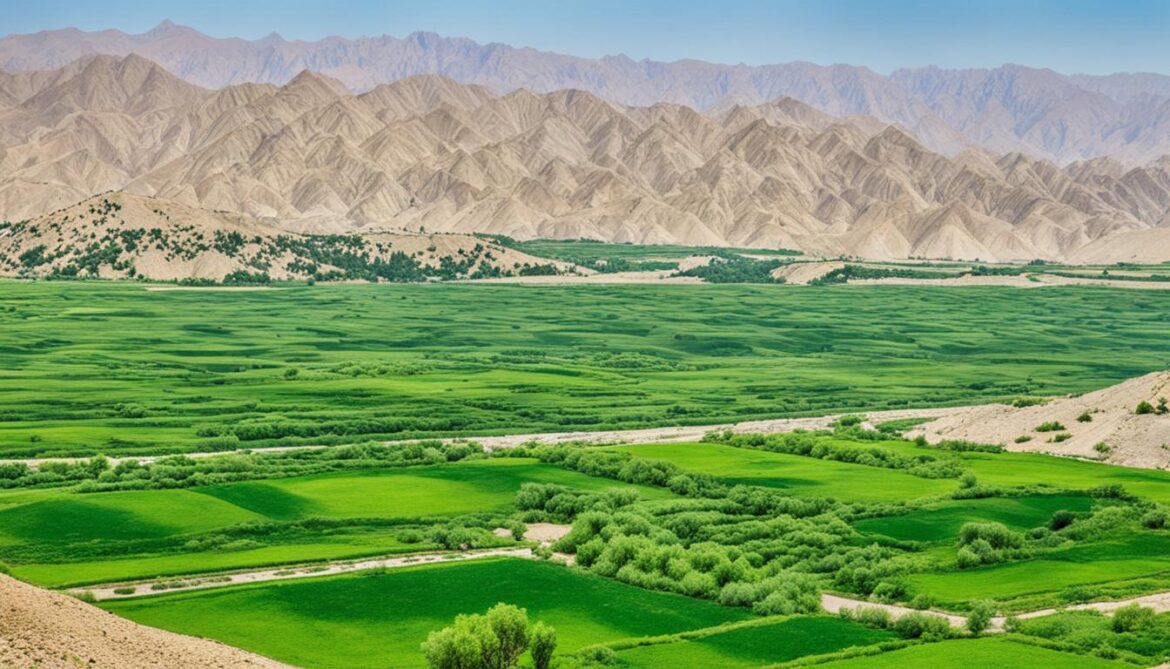
The Role of Reserves in Biodiversity Conservation
Uzbekistan is committed to biodiversity conservation, and its reserves play a vital role in achieving this goal. These protected areas, such as the Chatkal reserve and the Gissar reserve, are designated habitats for endangered and endemic species, safeguarding their survival and promoting species diversity. The reserves also contribute to the preservation of unique flora and fauna, including rare mammals, birds, and plants.
The Chatkal reserve, located in the western part of the Chatkal range, is home to various animal species, including the snow leopard and Bukhara deer. This reserve not only offers a safe haven for these magnificent creatures but also allows researchers to study and monitor their populations, contributing to their conservation efforts. In addition, the Gissar reserve, situated in the Gissar mountain range, protects unique highland ecosystems and provides habitat for species such as the Tien Shan brown bear and Severtsov’s sheep.
Conservation efforts focused on these reserves help maintain the delicate balance of Uzbekistan’s ecosystems and protect biodiversity. By preserving these habitats, Uzbekistan ensures the survival of not only individual species but also the intricate ecological relationships that sustain them. These reserves offer valuable opportunities for researchers, scientists, and nature enthusiasts to study, appreciate, and raise awareness about the importance of biodiversity conservation.
Benefits of Reserves in Biodiversity Conservation
Reserves in Uzbekistan serve multiple purposes besides protecting endangered species and preserving unique ecosystems. They also contribute to the ecological stability of the region and provide essential ecological services such as water regulation, carbon sequestration, and soil conservation. These benefits extend beyond the immediate boundaries of the reserves, positively impacting the surrounding landscapes and communities.
The establishment of reserves promotes sustainable development, ensuring the long-term viability of Uzbekistan’s natural resources and economic sectors. By protecting key habitats and preserving biodiversity, reserves support ecosystem-based tourism, such as ecotourism, which generates economic benefits for local communities while raising awareness about the importance of conservation.
“The conservation of reserves in Uzbekistan is vital for safeguarding the country’s biodiversity and preserving its natural heritage for future generations.”
To effectively conserve biodiversity, the management and sustainable development of reserves are crucial. This involves implementing measures such as habitat restoration, species reintroduction, and habitat connectivity enhancement. Additionally, scientific research and monitoring programs play a significant role in assessing the effectiveness of conservation efforts and informing future strategies.
| Reserve | Location | Main Fauna |
|---|---|---|
| Chatkal reserve | Western Chatkal range | Snow leopard, Bukhara deer |
| Gissar reserve | Gissar mountain range | Tien Shan brown bear, Severtsov’s sheep |
The management and protection of reserves require collaborative efforts involving government agencies, local communities, non-governmental organizations, and research institutions. By working together, these stakeholders can address the various challenges posed by habitat loss, illegal wildlife trade, and climate change to ensure the long-term conservation of Uzbekistan’s rich biodiversity.
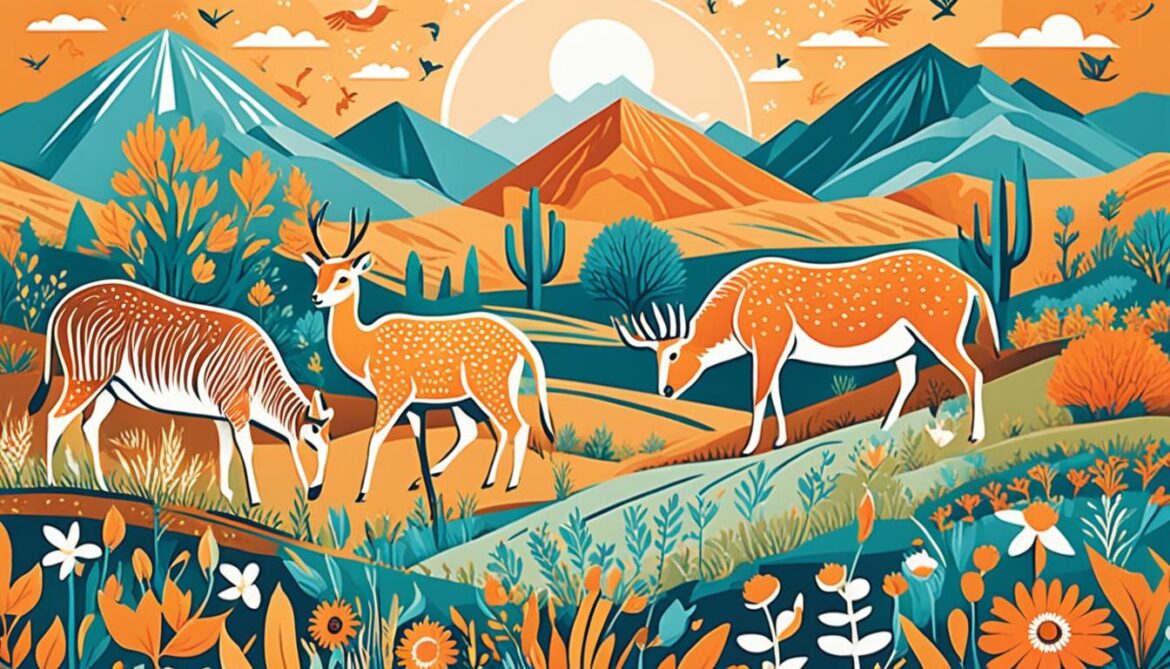
Conclusion
Uzbekistan Conservation is crucial in preserving the country’s rich Biodiversity Uzbekistan and sacred natural sites. Despite the challenges faced, such as habitat loss and unsustainable practices, Uzbekistan has taken significant steps towards protecting its natural heritage. Through the National Biodiversity Strategy and Action Plan (NBSAP) and the establishment of reserves and national parks, the country is actively working towards sustainable development and nature conservation.
To ensure the long-term preservation of biodiversity, it is essential to promote sustainable practices, raise awareness about the importance of conservation, and involve local communities in the decision-making process. By fostering a sense of stewardship and providing opportunities for ecotourism, Uzbekistan can not only safeguard its unique flora and fauna but also create memorable experiences for visitors.
Uzbekistan’s remarkable interplay of sacred sites, diverse landscapes, and abundant wildlife offers immense potential for ecotourism. Exploring the country’s natural beauty and learning about its cultural and historical significance can be a transformative experience for travellers. By continuing to prioritize conservation efforts and sustainable development practices, Uzbekistan can protect its natural heritage for future generations while also benefiting from the economic advantages of ecotourism.



